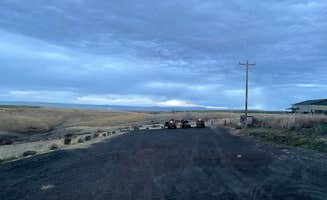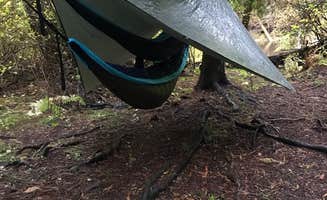Primitive camping near Asotin, Washington offers several remote locations in the high elevation zones between 5,000-6,000 feet in the Blue Mountains and Wallowa-Whitman National Forest. The Continental Divide Trail and Nez Perce Trail systems pass through portions of this area, providing historical and natural points of interest for backcountry campers. Weather conditions can shift dramatically in these higher elevations, with summer thunderstorms common and significant temperature drops at night even during peak season.
What to do
Hiking Snake River trails: The hike from Red Bird Creek Trailhead features a challenging descent to the Snake River. "Hike is down to the Snake River, which is over 5 miles each way. Major elevation change," notes reviewer Leah G., who adds that the "trailhead view is beautiful."
Wildlife observation: The elevation and remote setting create prime conditions for wildlife encounters. At Horse Camp Trailhead, campers report good opportunities to spot native species. "I have wandered into wilderness to camp farther away from the trail," explains one camper who frequently visits this area for short overnight trips.
Wildflower viewing: Spring and early summer bring wildflower displays to high meadow areas. North Thomason Meadows sits at approximately 5,000 feet elevation where campers can experience seasonal flora. This area "has more plant diversity" according to reviewer Alyse L., who notes the area is "grazed less than surrounding areas."
What campers like
Night sky viewing: The minimal light pollution in remote camping areas creates exceptional stargazing opportunities. At Starvation Springs NF 46 Site, Kenny R. mentions "fantastic starlink speeds" while enjoying the night skies, noting that summer temperatures reach the "mid 80's during the day in late July."
Canyon views: The elevated position of many dispersed sites provides panoramic vistas across major river drainages. North Thomason Meadows sits "at the top of the Imnaha River breaks, and you can see fully down into the BEAUTIFUL canyonlands of the Imnaha and Snake," according to visitor reviews.
Bird watching: The diverse terrain supports numerous bird species, particularly raptors. "Birdwatching was good for us out here too, especially raptors," reports one camper at North Thomason Meadows. At Red Bird Creek, David C. mentions "owls calling throughout the evening" during his stay.
What you should know
Road conditions: Access routes vary significantly in quality and maintenance. Kenny R. describes Starvation Springs as "not far up a nicely paved road, and then onto maybe 0.3-0.4 mile bumpy gravel/rock FS road," noting it "isn't 5 miles down some super washboarded gravel road."
Self-sufficiency requirements: These remote sites demand complete preparedness. "Bring all the water and supplies and tools you need," advises a North Thomason Meadows visitor who notes there is "zero water, zero data" and it's a "50-minute drive to WiFi/restaurant/water refill/black water dump."
Seasonal considerations: Weather patterns affect both access and camping comfort. The ideal camping window for many sites runs from late spring through early fall. Alyse L. specifically recommends visiting North Thomason Meadows "in late spring or early fall" for the best experience.
Tips for camping with families
Short-stay options: For families seeking quick outdoor experiences, Horse Camp Trailhead provides convenient access. "This is my go to spot when I just want to get a quick overnight camp in," says Megan K., who values its proximity to home for spontaneous trips.
Alternative sites: Have backup locations ready during peak seasons. Horse Camp Trailhead visitors suggest nearby alternatives: "Laird Park is just down the road and you can get to nice river areas from both campsites. If you can't get a spot here you can always try down by Laird as a backup."
Timing considerations: Schedule around hunting seasons when areas may become crowded. North Thomason Meadows reports indicate "in fall this is a popular camp area for hunters," suggesting families might prefer spring or summer visits for a quieter experience.
Tips from RVers
Suitable rig sizes: Some dispersed sites accommodate larger vehicles despite primitive conditions. Kenny R. brings a "20 foot RV" to Starvation Springs and finds "plenty of large open sites with rock fire rings" that work well for recreational vehicles.
Fire safety awareness: Check current regulations before planning campfires. "Be aware of burn bans and/or prescribed burns in the area," cautions an RVer at Starvation Springs, emphasizing the importance of monitoring local fire conditions before travel.
GPS reliability: Standard mapping applications may not provide accurate directions to remote sites. Regarding Horse Camp Trailhead, Megan K. warns "the coordinates from this listing are incorrect and take you down the wrong road," suggesting travelers verify routes through multiple sources before departure.



